Manufacturing Process
Alginic acid and its derivatives are manufactured commercially involving several ion-exchange operations including extraction and purification of the seaweed polysaccharides.
-


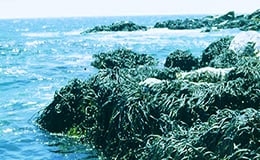
Dry Seaweeds
The raw material of Alginate is brown seaweed which grows abundantly in the world’s oceans. KIMICA utilizes Lessonia as its raw material seaweed.
-


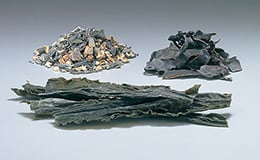
Crushing
Carefully selected seaweed, after it is dried and pulverized, is used for Alginate production.
-


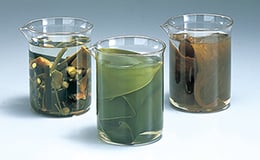
Washing & Swelling
By reacting with divalent metal cations in seawater (such as calcium), the alginic acid in seaweed forms a water insoluble alginate gel. This alginate is partially cross-linked and helps retain the seaweed structure. After rinsing with water, the seaweed is swelled in acidic water.
-


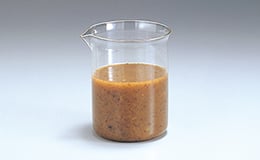
Extraction
The alginate in seaweed is extracted by conversion to water-soluble sodium alginate. Caustic soda is added to extract sodium alginate from swelled seaweed.
-


Clarification
The aqueous alginate solution is then isolated by a clarification procedure.
As this aqueous alginate solution is highly viscous, this solution is diluted by adding large quantities of water prior to clarification. This processing stage utilizes proprietary technology developed by KIMICA. -


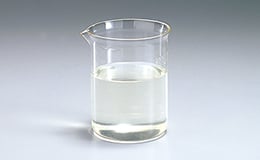
Filtration
Seaweed extract is filtered to separate sodium alginate solution from the fibrous seaweed residue (cellulose, etc.)
-


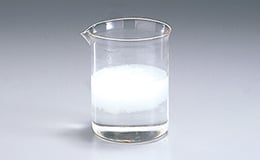
Precipitation
To isolate alginic acid from the dilute sodium alginate solution, an acid is added.
In an acidic system, insoluble alginic acid is precipitated and isolated. This is called the “Acid Precipitation Method”.
The “Acid Precipitation Method” is particularly suitable for the production of high quality alginic acid as it reduces calcium contamination. Calcium has a considerable effect on the properties and functionality of the final alginic acid and its derivatives.[1] -


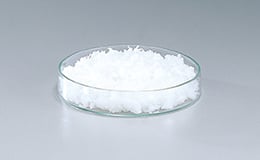
Alginic Acid (wet product)
Precipitated alginic acid is dehydrated and fibrous wet product (gel) is produced.
-
- KIMICA ALGIN
- KIMICA ACID
- KIMILOID

Ion-Exchange
Mono- and divalent cations are added to wet alginic acid product to produce alginate salts by an ion-exchange reaction (see below)
Drying & Milling
After reaction, products are hot-air dried then milled to a range of particle sizes.
KIMICA ALGIN
- Sodium Alginate
- Potassium Alginate
- Calcium Alginate
- Ammonium Alginate

Drying & Milling
After reaction, products are hot-air dried then milled to a range of particle sizes.
KIMICA ACID
- Alginic Acid

Esterification
Propylene Oxide is added to wet alginic acid product to produce Alginate Ester by esterification (see below)
Drying & Milling
After reaction, products are hot-air dried then milled to a range of particle sizes.
KIMILOID
- Propylene Glycol Alginate
Notice
1: There are two processing routes to manufacture alginates: the “Acid Precipitation Method” and the “Calcium Precipitation Method”. From its foundation, KIMICA has developed and commercialized the “Acid Precipitation Method”, and possesses considerable “know-how” of this production route.